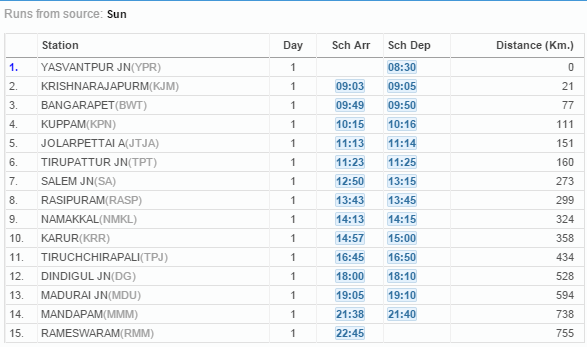Rameswaram at Glance
Rameswaram island is one of the
famous ‘place of pilgrimage’ and a tourist spot in India. It is well known by
the Hindu devotees & Pilgrims for its sacredness mentioned in ancient
Indian scriptures such as puranas and epic Ramayana .Millions of pilgrims
and tourists visits ‘Rameswaram’ all
around the year.
The Island
city of Rameswaram is located in the sea
region called by the name ’ Gulf of mannar Bio sphere reserve ‘ , surrounded by the sea water on all
of its sides (“Bay of Bengal and Indian ocean” merges in the very tip of this
island ) , this island Situated exactly
in between India and Srilanka . It is Separated from the main land of
Indian Peninsula by means of ‘Pamban Channel’ The main land of India is connected through a Road bridge [ 2.03
KM], and a cantilever Railway Bridge [2.06 KM].
Rameswaram
is a town and a Third grade municipality in the Ramanathapuram district of
the South Indian state of Tamil Nadu. It is administered by a
municipality established in 1994. The town covers an area of 51.8 Sq.km and possesses sandy soil for almost 74% of its area.
Geography:
Rameswaram Island is located on the eastern part
of Ramanathapuram district of Tamil Nadu bound between the latitudes E 79°12'
30" and E 79° 27' 30" and longitudes N 9° 8' 55" and N 9° 19',
with an average altitude of 9 meter above mean sea level. It has the landforms like beaches, beach ridges and
Swales, mudflats, Dunes and Sandy plains , raised coral terraces, lagoons,
Mudflats, spit ,creeks along with living
corals.

Coastal
geomorphology around Rameswaram Island
Climate:
Rameswaram has dry tropical climate with low
humidity throughout the year. The
highest ever temperature recorded was 38 °C and the lowest was 17 °C.
The average temperature in summer (ie April to August ) lies within 30 to 38 ° C . The average temperature in Winter season lies on 25 to 30 °
C (ie, December – February) .
The
North-East and the South-West monsoons
hits the Rameswaram island. The South-West monsoon, extends from April over a
period of 6 or 7 months, whereas the
North-East monsoon commences in November and ceases in February or early March.
Rameswaram got rainfall mostly from North
East monsoon from October to January. Average rainfall is 50 cm
The Rameswaram has
population of 44,856 of which 22,783 are males while 22,073 are females as per
report released by Census India 2011.
Population of Children with age of 0-6 is 5022 which is 11.20 % of
total population of Rameshwaram (M). In Rameswaram Municipality, Female Sex
Ratio is of 969 against state average of 996. Moreover Child Sex Ratio in
Rameswaram is around 974 compared to Tamil Nadu state average of 943. Literacy
rate of Rameswaram city is 82.61 % higher than state average of 80.09 %. In
Rameswaram, Male literacy is around 87.64 % while female literacy rate is 77.42
%.
Tourism
and fishery employs the major source of income among Rameswaram residents .Being
an island fishing is the traditional occupation of the people. Rameswaram is
one of the important fishing centers of Tamil Nadu. Fishing, collection of seashells, exporting
sea foods, tourism, restaurants, Hotels, prohitham (Hindu religion’s holistic
rituals), sea shell, pearl, conchs ,
marts are the main occupations of the Rameswaram people.
There is
a famous saying roam around the rameswaram which says “In the island of
Rameswaram people never plough the fields
or using oil-presses to obtain
oil ”.
The soil of rameswaram is not suitable for agriculture, however
in some lands around the island people cultivate vegetables, Coconut , palm and tamarind
trees. Coconut and palm trees are the main vegetation of this island. Palm leaf baskets, idols made up
of coconut , fiber bags made out of
coconut and palm fibers are crafted by rameswaram people .
Basically Rameswaram is
an industrially backward town – there has been no demarcation for industrial
land due to the pilgrim sanctity and ecological fragile geography. Sea foods
processing , ice and sea shell crafting kind of industries are the only industries ran in rameswaram.


Comments
Post a Comment